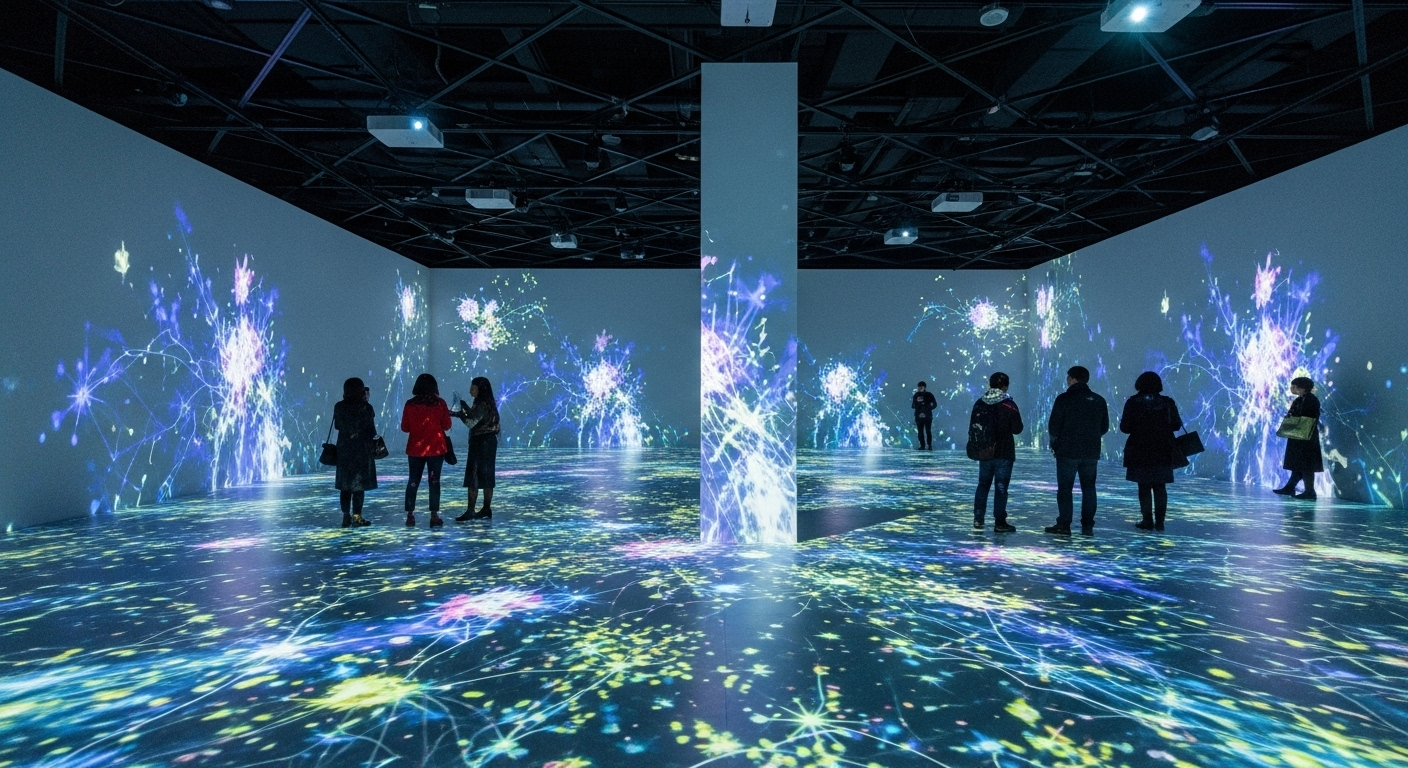Cross-disciplinary Labs Merging Dance, Code, and Live Sound
Cross-disciplinary labs are reshaping performance by bringing together dance, code, and live sound to produce immersive experiences. These labs blend gallery-based installation, projection mapping, interactive multimedia, and curated workshops so artists, technologists, and audiences can explore new storytelling formats and modes of collaboration across digital and physical environments.

How do labs handle gallery, exhibition, and curation?
Cross-disciplinary labs working at the intersection of dance, code, and live sound increasingly operate within gallery and exhibition contexts, where curation becomes a practice of choreography for space and time. Curators negotiate visitor flow, sightlines, and the sequencing of encounters so that installations and performances can coexist. Working with artists, curators translate performance needs—floor space, audio monitoring, sightlines—into exhibition strategies that support durational works, timed projections, and audience participation without compromising technical needs or artistic intent.
How do installation, projection, and immersive design work?
Installation and projection form the visual backbone of immersive experiences produced by these labs. Projection mapping on stage surfaces, sculptural objects, or architectural elements creates mutable environments that dance and sound can alter in real time. Immersive design considers spatial audio, lighting, and tactile elements as part of a single sensory field. Labs prototype layouts and iterate on scale, distance, and sightlines to ensure projection content coheres with choreography and live sound, producing an embodied sense of immersion rather than a collection of discrete effects.
How does multimedia and interactive technology integrate?
Multimedia and interactive systems enable responsive relationships between performers, code, and audience. Sensors, motion capture, and custom software translate bodily movement into visual or sonic output, allowing choreography to drive generative multimedia. Interactive frameworks often use patching environments, game engines, or web technologies to connect inputs and outputs. Labs emphasize robust technical design—latency management, reliable networking, fallback modes—so interactive elements remain expressive and theatrical rather than brittle. This technical grounding lets creative teams focus on dramaturgy and user experience while maintaining system reliability.
How does digital and virtual practice shape performance?
Digital and virtual practices expand both the reach and the material of contemporary performance. Virtual scenography—real-time 3D environments, mixed reality overlays, and streaming-enabled stages—offers alternative staging strategies that can augment live bodies or create hybrid audiences. Digital workflows also influence rehearsal processes: code-based choreography tools, video-based feedback loops, and remote collaboration platforms let teams iterate outside traditional studio constraints. Labs exploring these modes consider accessibility, bandwidth, and the dramaturgical implications of mediated presence, ensuring virtual components support rather than replace embodied exchange.
What role does sounddesign and live sound play?
Sounddesign in cross-disciplinary labs is central to shaping temporal and spatial perception. Live sound designers build systems that can react to movement and algorithmic processes, blending field recordings, synthesized textures, and processed live instruments or voices. Spatial audio techniques—ambisonics, multichannel arrays, object-based mixing—help position soundscapes that guide attention and support narrative arcs. Collaboration between choreographers and sound designers treats sound as a structural element, enabling timed cues and continuous interaction where movement and audio evolve together in a coherent dramaturgy.
How do collaboration, storytelling, and workshops build outcomes?
Collaboration and structured workshops are core to lab culture, fostering cross-disciplinary literacy among dancers, coders, instrument builders, and curators. Workshops emphasize prototyping: short cycles of making, testing, and reflection that surface new affordances and constraints. Storytelling emerges as a shared language—teams map emotional beats, interactive states, and audience trajectories so narrative concerns inform technical design. Labs often document processes and create templates for reuse, building institutional knowledge that helps future projects move from experimental sketches to robust performances or installations.
Conclusion
Cross-disciplinary labs merging dance, code, and live sound generate new performance ecologies where technical systems and embodied practices inform one another. By linking gallery-based curation, immersive installation, interactive multimedia, and collaborative workshops, these labs expand possibilities for storytelling and audience engagement. The ongoing challenge is to balance experimental risk with operational reliability, ensuring that innovative formats remain accessible, repeatable, and artistically rigorous across diverse venues and contexts.





